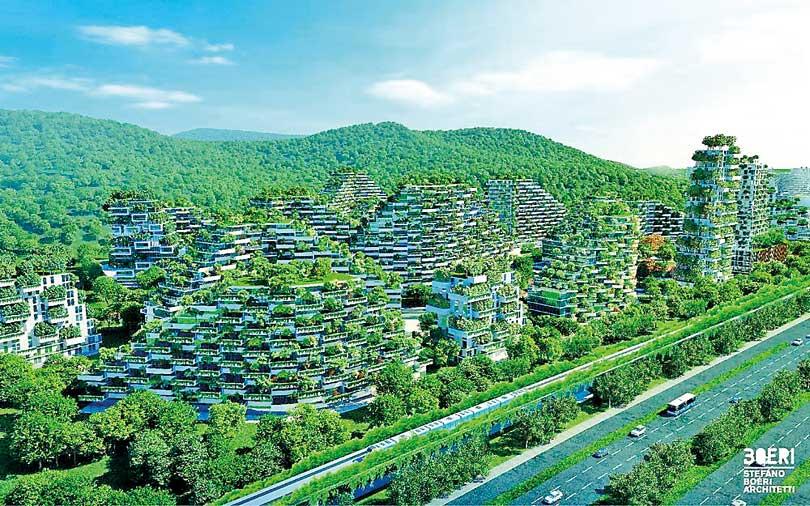Reply To:
Name - Reply Comment

Dubai has its own indoor rainforest now. India is creating mini-forests in all big cities following the ‘Akira Miyawaki’ method while Brazil, the home of Amazon forest, is doing the same. China which is creating forests in major cities like Beijing and Shanghai at a rate is in the process of building a fully-fledged forest city. Once completed, the Liuzhou Forest City will have all its buildings covered with plants. It’s slated to absorb some 10,000 tonnes of carbon dioxide, 57 tonnes of pollutants and produce nearly 900 tonnes of oxygen annually. Besides, Shanghai has started unveiling a forest city comprising offices, schools and homes with built-in trees.
In the Global Climate Risk index this year, Sri Lanka ranked second among the countries most affected by extreme weather patterns during the past twenty years. We were right behind Caribbean Island Puerto Rico. Anyone who has lived here during the past twenty years or so is witness to the extreme weather events – regular floods, stormy weather and drought.
Despite this fact, virtually nothing has been done to contribute to the global battle against climate catastrophe while the rest of the world is working hard to beat it.
For long, development in Sri Lanka was interpreted as converting villages and suburbs into concrete jungles. Forest cover which stood at 50% by 1949 has plummeted to 18% today. Sri Lanka is yet to demarcate even a buffer zone for its only remaining rainforest, Sinharaja, despite a Cabinet decision taken in support of that in 2004. It was only after public protests that the State Plantations Corporation (SPC) withdrew commercial projects in the Knuckles conservation area last year.
This trend of paying scant regard to forests is continued at a time when cities like Paris are moving to create forests five times bigger than Central Park in New York, having realised the significance of green cover in big cities.
The city of Colombo today is a classic example of an unplanned city with absolutely no regard for climate factors. To describe in climate terms, Colombo is one big urban heat island. Colombo still has quite a number of vacant plots belonging to government departments and agencies like the Urban Development Authority (UDA). Past few decades saw consecutive governments selling its city and suburban lands to real estate companies with little concern for the sustainability of high-rise apartment projects. This has largely led to the loss of green cover and increased concretisation with even suburbs joining the heat island every passing day. While the increased apartment population in Colombo and its suburbs has added to water supply issues, apartment projects are faced with major problems with regard to sewerage.
It is high time that we put an end to this practice of selling government property in cities to private parties and instead start growing mini-forests in these vacant plots as done in India. The mini-forests can be created even in small areas in urban spaces.
In fact, the modern Indian movement for the creation of city forests was initiated by a young engineer, Shubhendu Sharma, following the success of creating such a green patch in his backyard. Sharma had volunteered to assist world renowned Japanese botanist Akira Miyawaki to create an urban forest in the Toyota plant that he worked for. While helping Miyawaki, young Sharma who was then in his twenties had tried the same technique – Potted Seeding Method – in his backyard. Following the phenomenal success of it, Sharma had left Toyota and started doing further research on this practice. A year later, he founded a company by the name ‘Afforest’ which has by now created nearly 35 urban forests in India.
As a country that has seen the worst effects of climate change, it is high time that we made our contribution to the global fight against climate catastrophe.